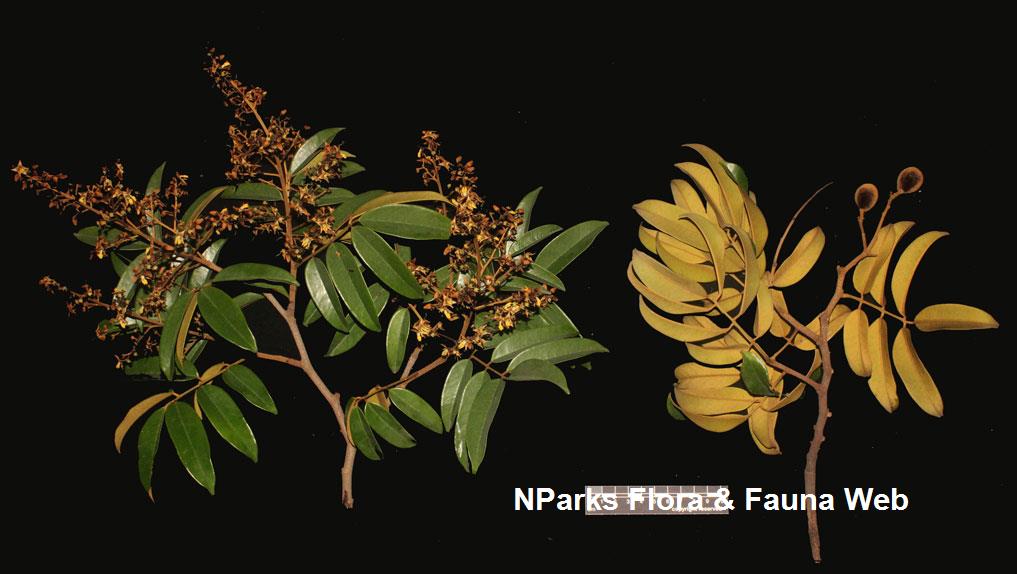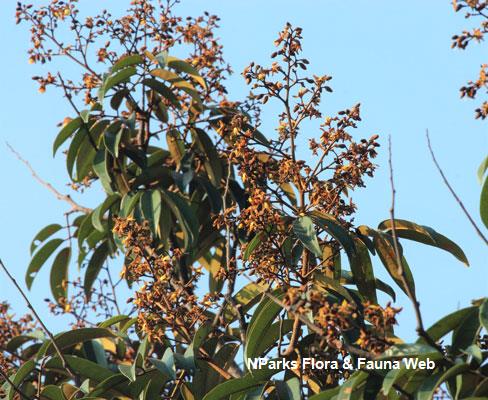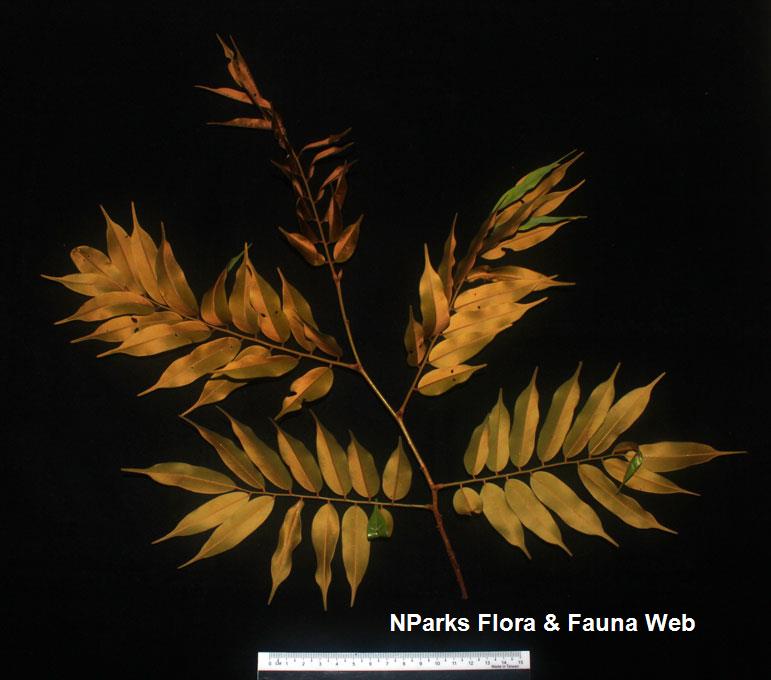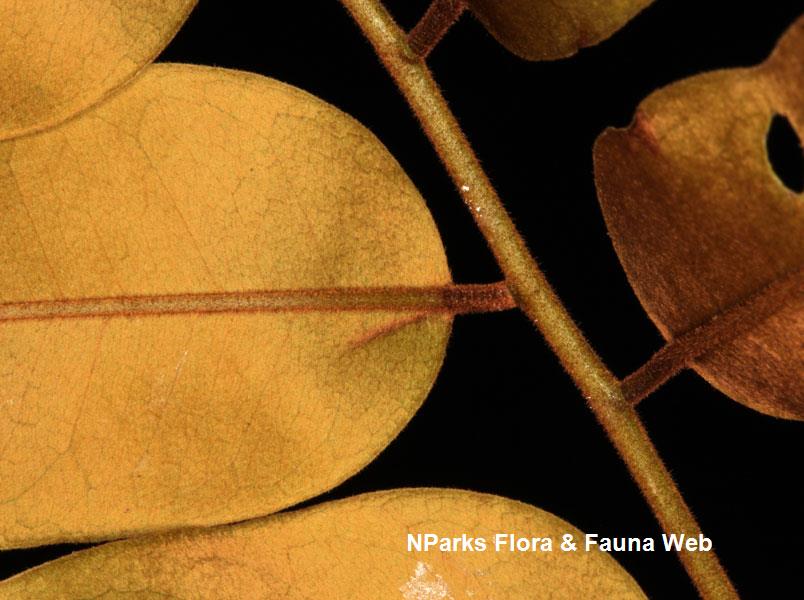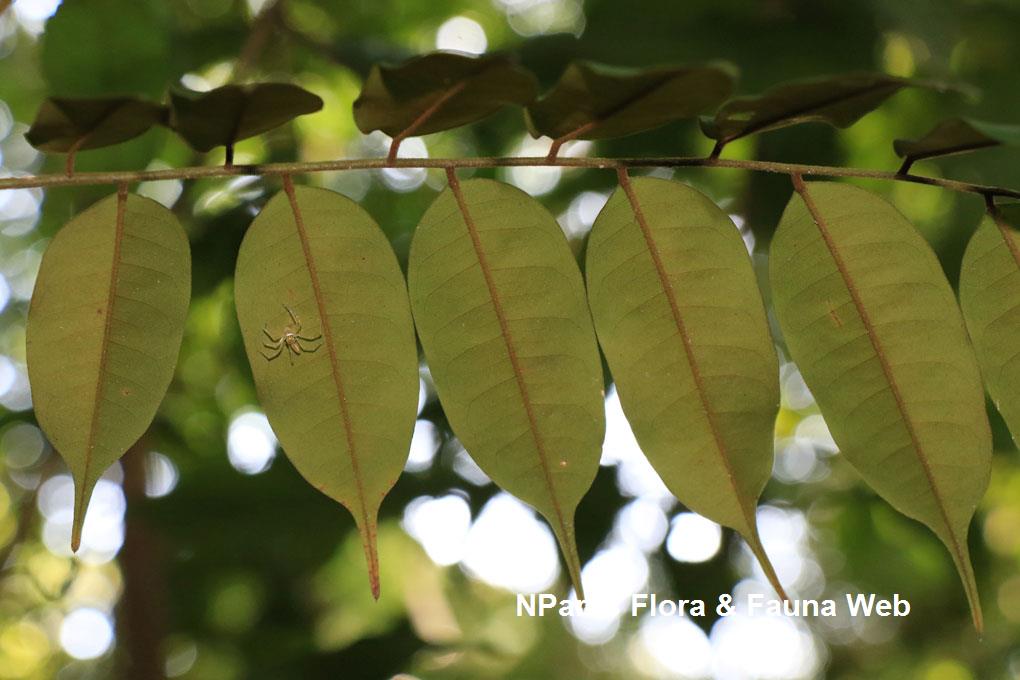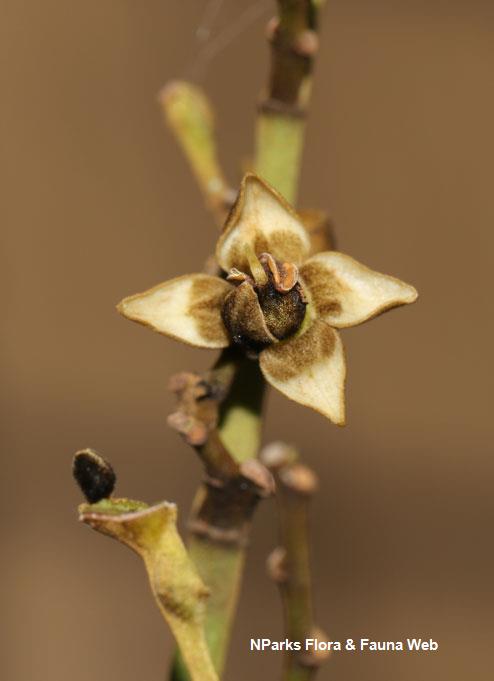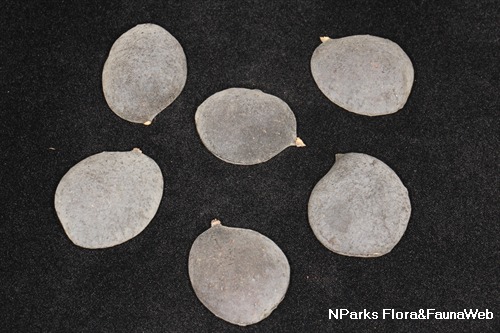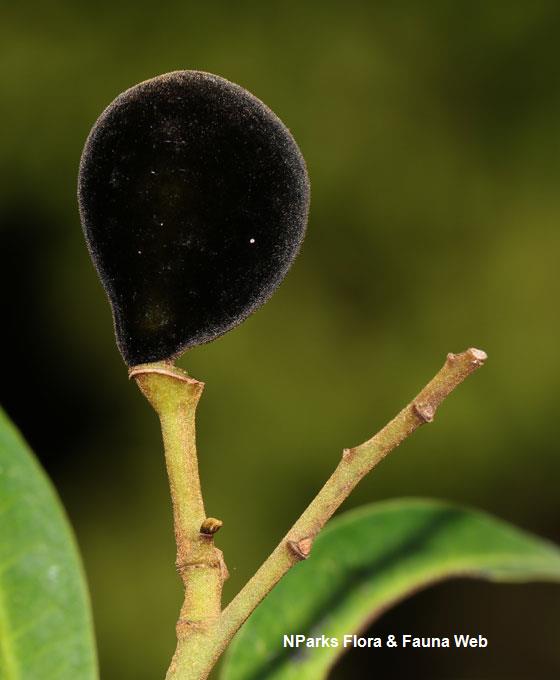
Back
Dialium platysepalum Baker
| Family Name: | Fabaceae (Leguminosae) |
| Synonyms: | Dialium wallichii (Baker) Prain, Dialium maingayi Baker, Dialium platysepalum Baker var. wallichii |
| Common Name: | Keranji Kuning Besar, Keranji Tree, Keranji Kuning Kechil, Keranji Bulu |
Dialium platysepalum or Keranji Kuning Besar is a tall tree native to Singapore. Growing to a height of 45 m tall, it has pinnate leaves with 7 - 13 oblong-elliptic to oblong-lanceolate leaflets, hairy on the underside, abrupt to long acuminate tip. Flowers have 5 calyx lobes, hairy on both sides, held on an inflorescence of 10 - 30 cm long. The fruit is a slightly flattened, subglobose to oval, densely brown velvety pod, each holds 1 - 2 round to kidney-shaped seeds covered in a sweet edible pulp.
Name
Classifications and Characteristics
| Plant Division | Angiosperms (Flowering Seed Plants) (Dicotyledon) |
|---|---|
| Plant Growth Form | Tree (Big (>30m)) |
| Maximum Height | 45 m |
Biogeography
| Native Distribution | Sumatra, Peninsular Malaysia, Singapore and Borneo |
|---|---|
| Native Habitat | Terrestrial (Primary Rainforest, Secondary Rainforest, Freshwater Swamp Forest) |
| Preferred Climate Zone | Tropical |
| Local Conservation Status | Native to Singapore (Critically Endangered (CR)) |
Description and Ethnobotany
| Growth Form | It is a tall and large tree with wrinkled, pale brown or grey bark, reaching to 45 m tall. |
|---|---|
| Foliage | Leaves are pinnate, each with 7 - 13 leaflets measuring 15 - 28 cm long. Leaflets are slightly leathery, broadly elliptic to lance-shaped, measuring 6 - 15 cm long by 2 - 7 cm wide. The leaves have a hairy underside, with 10 - 12 lateral veins prominent beneath, while the leaf tip has either an abrupt or long tail-like tip. |
| Flowers | Flowers are held on an inflorescence, hairy with each cluster measuring 10 - 30 cm long. Flowers consist of 5 calyx lobes, minutely hairy on both sides measuring 6 mm long by 4 mm wide. |
| Fruit | The fruit is an slightly flattened, almost round to oval, densely brown velvety pod measuring 2 - 2.5 cm long. Each contain 1 - 2 round to kidney-shaped seeds covered in a sweet edible pulp of 0.3 - 1.3 cm long by 0.9 cm wide. |
| Habitat | Occurs in lowland, freshwater swamp forests up to 1000 m altitude. |
| Cultivation | It can be propagated by seed. <1,2> |
| Etymology | The genus, Dialium, a latinised old Greek plant name for dialion, used for a kind of heliotrope. The species epithet, platysepalum Greek, platus = broad, sepalum = sepal; with broad sepals. |
| Ethnobotanical Uses | Edible Plant Parts : Edible Fruits Food (Fruit or Vegetable): In Borneo, the sweet pulp surrounding the seed is eaten and sold in village markets. |
Landscaping Features
Plant Care and Propagation
| Light Preference | Full Sun |
|---|---|
| Water Preference | Moderate Water |
| Plant Growth Rate | Slow |
| Rootzone Tolerance | Fertile Loamy Soils, Well-Drained Soils |
| Propagation Method | Seed |
Foliar
| Foliage Retention | Evergreen |
|---|---|
| Foliar Type | Compound (Even-Pinnate, Odd-Pinnate) |
| Foliar Arrangement Along Stem | Alternate |
| Foliar Attachment to Stem | Petiolate |
| Foliar Shape(s) | Non-Palm Foliage (Elliptical, Lanceolate, Oblong) |
| Foliar Venation | Pinnate / Net |
| Foliar Margin | Entire |
| Foliar Apex - Tip | Acuminate |
| Foliar Base | Cuneate, Rounded / Obtuse |
Non - Foliar and Storage
| Stem Type & Modification | Woody |
|---|
Floral (Angiosperm)
| Flower & Plant Sexuality | Bisexual Flowers , Bisexual Flowers |
| Flower Colour(s) | Cream / Off-White, White |
|---|
| Flower Texture(s) | Hairy / Hirsute |
| Flower Grouping | Cluster / Inflorescence |
| Flower Location | Terminal |
| Flower Symmetry | Bilateral |
| Flowering Habit | Polycarpic |
Fruit, Seed and Spore
| Mature Fruit Colour(s) | Brown, Black |
|---|---|
| Fruit Classification | Simple Fruit |
| Fruit Type | Indehiscent Dry Fruit , Pod |
References
| References | <1> Hou, D. (1995). Leguminosae. Tree Flora of Sabah and Sarawak, vol. 3, pp. 166. Leiden, Rijksherbarium. <2> Soerianegara, I. & Lemmens, R.H.M.J. (1993). PROSEA, No. 5(1) Timber Trees: Major Commercial Timbers, pp.147. Wageningen: Pudoc Scientific Publishers. |
|---|
Image Repository
Others
| Master ID | 1987 |
|---|---|
| Species ID | 3279 |
| Flora Disclaimer | The information in this website has been compiled from reliable sources, such as reference works on medicinal plants. It is not a substitute for medical advice or treatment and NParks does not purport to provide any medical advice. Readers should always consult his/her physician before using or consuming a plant for medicinal purposes. |

